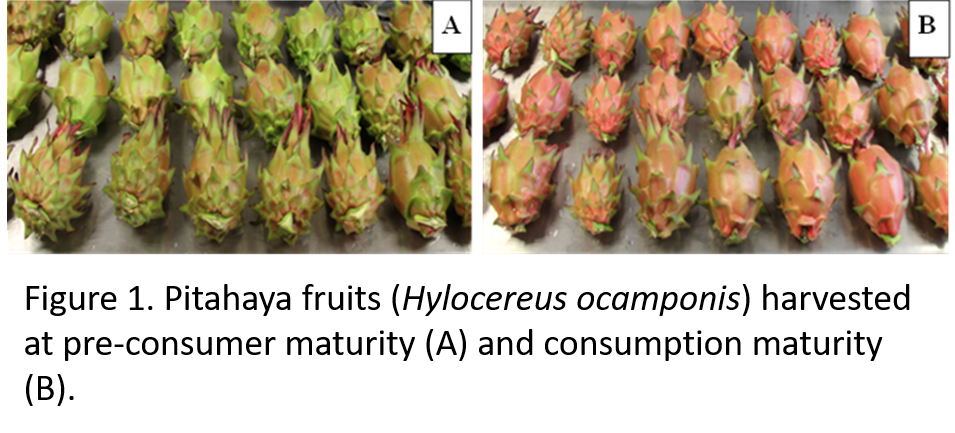Integrated Postharvest of Pitahaya fruits (Hylocereus ocamponis) stored at different temperatures
DOI:
https://doi.org/10.56890/jpacd.v25i.521Keywords:
shelf life, betalains, state of maturity, refrigerationAbstract
Pitahaya (Hylocereus spp.) has been placed successfully in the global fruit market due to its exotic appearance and pleasant flavor; however, its short postharvest life has limited its marketing in national and international markets. The postharvest life and final quality of fruits depend on the state of maturity in which the fruit is harvested, as well on the storage conditions. The aim of this study was to assess the postharvest behavior of pitahaya fruits (H. ocamponis) harvested during two states of maturity (pre-consumer and consumption maturity), stored at 6 ± 1°C and 22 ± 3 °C for 24 days. The color, firmness, epicarp thickness, weight loss, soluble solids, total soluble sugars, betalains, phenolic compounds and antioxidant activity showed significant changes during the storage period. The preserved fruits at room temperature maintained their firmness and color of the epicarp, content of soluble solids, soluble sugars and betalains during 9 days of storage, but from the 16th day, they showed rottenness and degradation of epicarp betalains. In contrast, the stored fruits in refrigeration presented a lower weight loss, greater firmness, and epicarp thickness, reaching 24 days of shelf life. The antioxidant activity was greater in the pulp of the stored fruits at 22 °C, due to an apparent higher betalains concentration associated with greater water loss in the fruit.
Publication Facts
Reviewer profiles N/A
Author statements
Indexed in
- Academic society
- Journal of the Professional Association for Cactus Development
- Publisher
- Professional Association for Cactus Development




